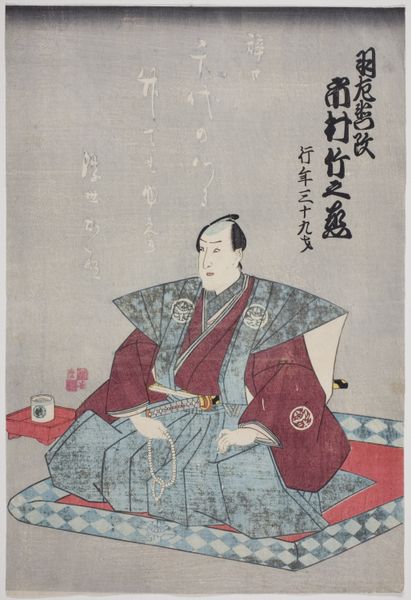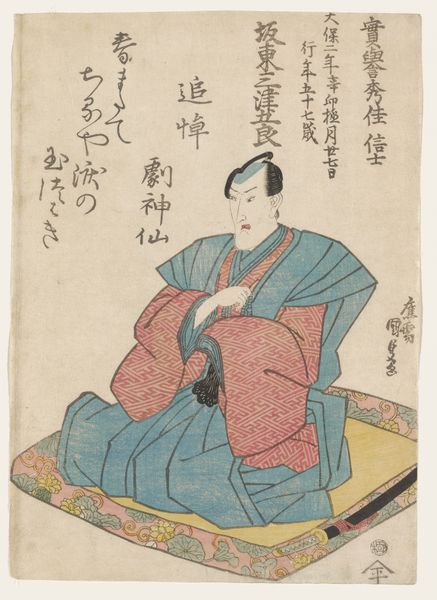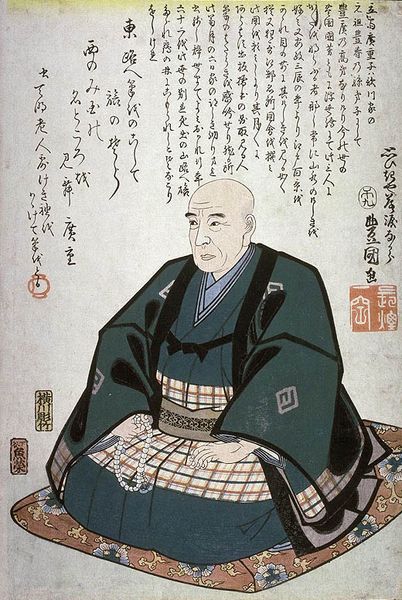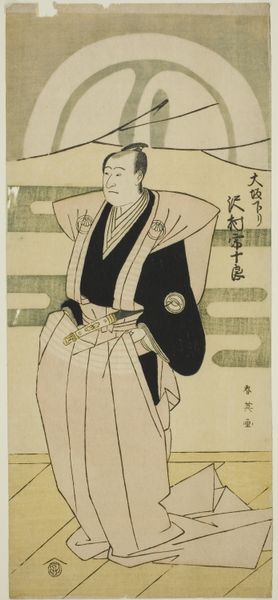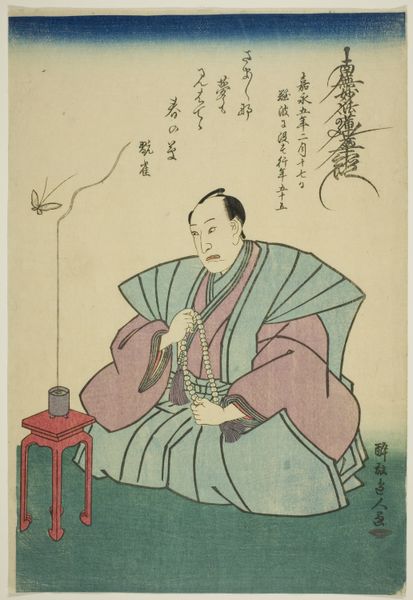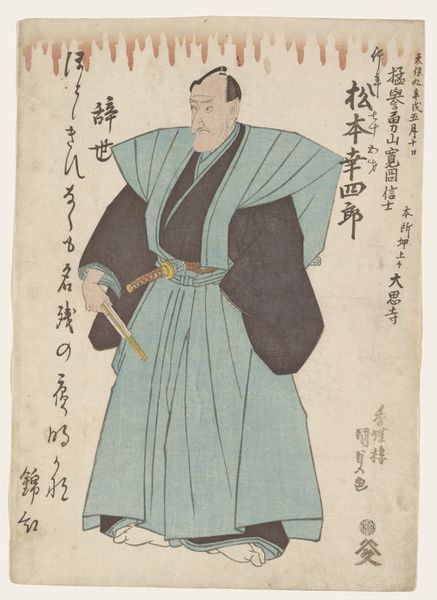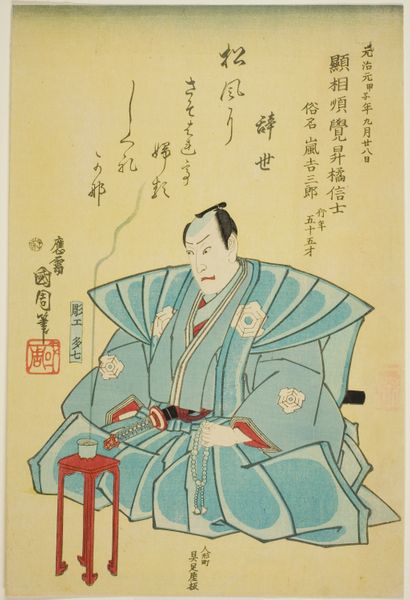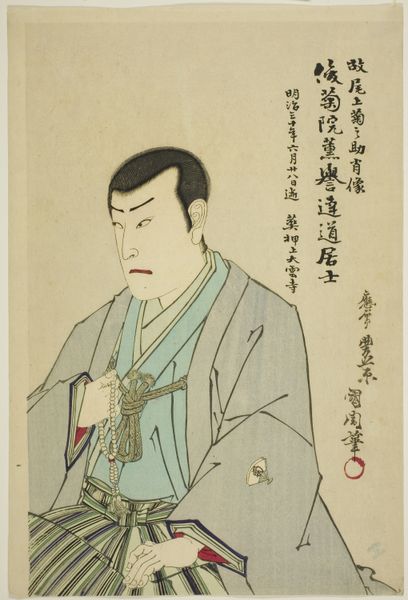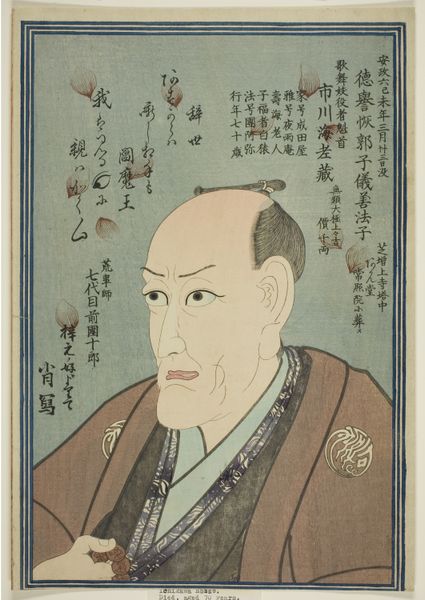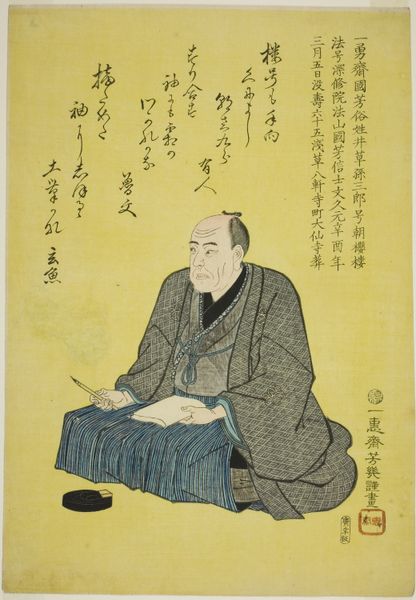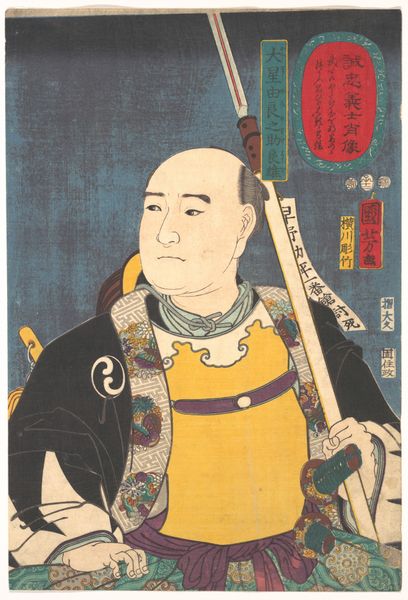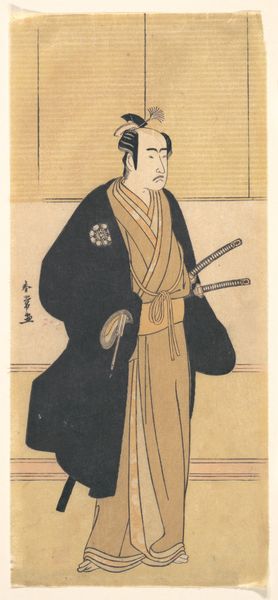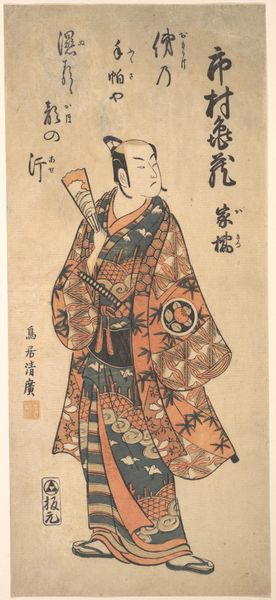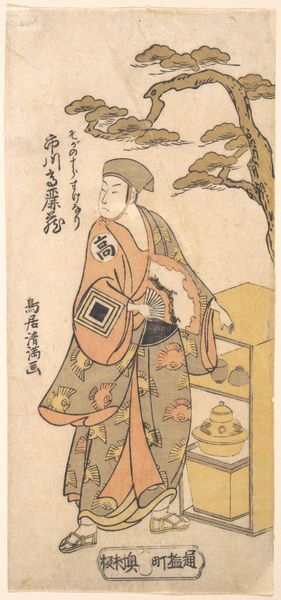
Memorial Portrait of Ichiryusai Hiroshige (1797–1858) 1786 - 1864
0:00
0:00
#
portrait
# print
#
caricature
#
asian-art
#
caricature
#
ukiyo-e
#
japan
#
men
#
watercolor
Dimensions: 14 1/4 x 9 5/8 in. (36.2 x 24.4 cm)
Copyright: Public Domain
Curator: Let's consider this intriguing memorial portrait of Ichiryusai Hiroshige, dating roughly 1786 to 1864, a woodblock print by Utagawa Kunisada now housed at The Met. What are your initial impressions? Editor: Immediately, I notice a kind of serene weight. The subject's posture, combined with the detailed lines and calligraphy surrounding him, creates a sense of historical gravity, as if we're in direct communication with a revered past. Curator: The composition definitely contributes to that feeling. Kunisada uses line and form meticulously. Notice the stark geometry of his robe against the rounded beads, which creates an intriguing tension, playing with the concept of portraiture itself. The figure almost appears trapped by geometric components. Editor: Agreed, and contextually, such commissioned prints of noted figures, specifically deceased ones, served distinct social purposes. This piece honors Hiroshige’s legacy within the Ukiyo-e movement while affirming Kunisada's place within that artistic lineage as well. It reminds people of the political sway artists maintained. Curator: Precisely. Beyond the political though, consider how Kunisada has managed to achieve subtle shading through a rigorous woodblock process, lending the subject a sense of volume while simultaneously flattening the picture plane. His kimono drapes heavily. Note also the calligraphy inscribed throughout—the lettering's contrast acts like yet another formal device. Editor: It’s interesting to see how social structures impact art, down to the use of line or a composition technique. Each is chosen deliberately. The floral pattern on the mat offers a visual contrast to the hard lines within the robe, reflecting the artistic circles. Curator: Exactly. These formalized portraits are both artworks in and of themselves, but they’re also markers of status, craft, skill, and visual statements. Editor: I will definitely examine similar portraits again in order to view the balance of visual aesthetics, historic value, and the political statements present in art of that period. Curator: Likewise, this has deepened my perspective on how visual and symbolic tools interplay within this particular print.
Comments
No comments
Be the first to comment and join the conversation on the ultimate creative platform.
